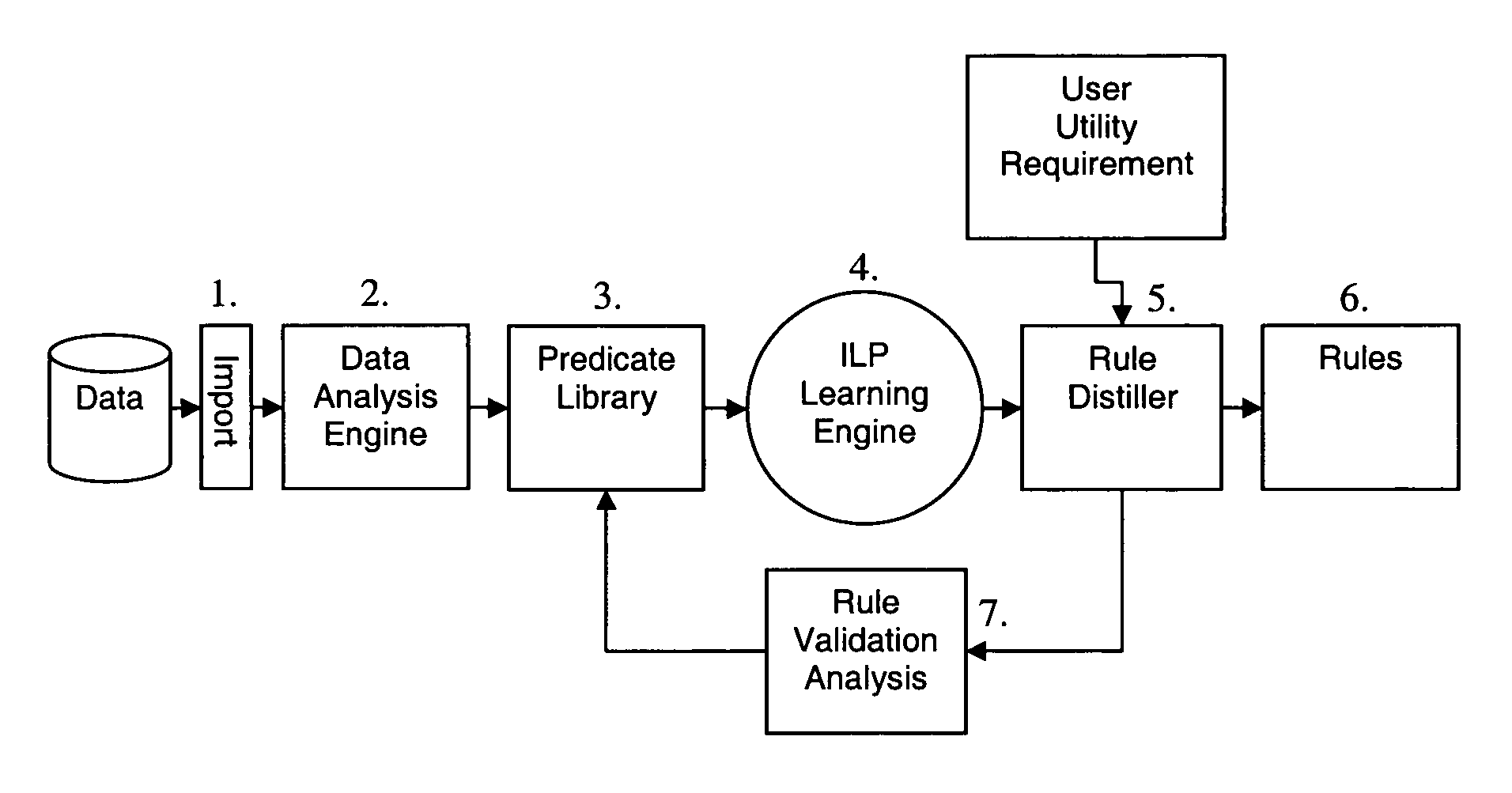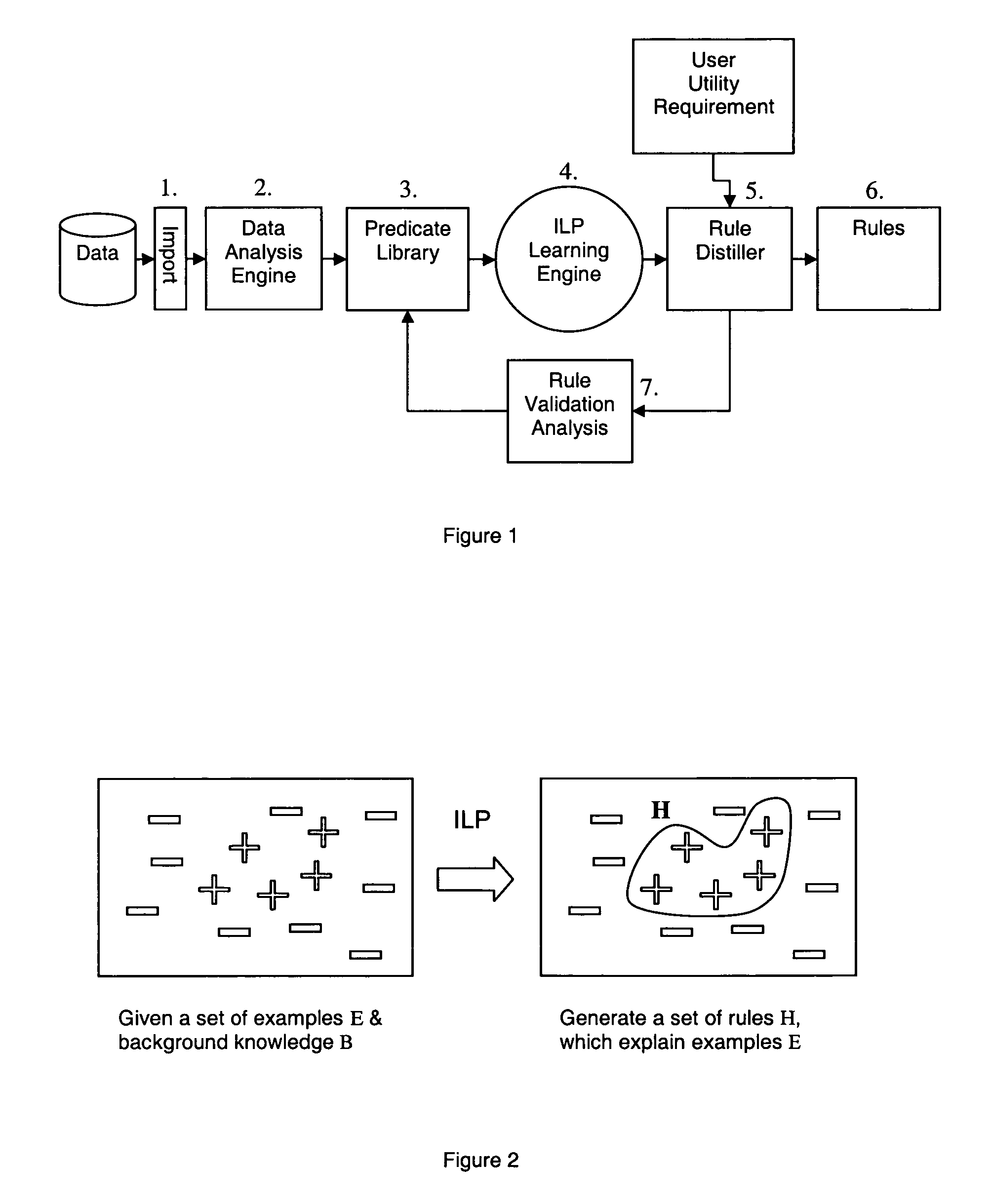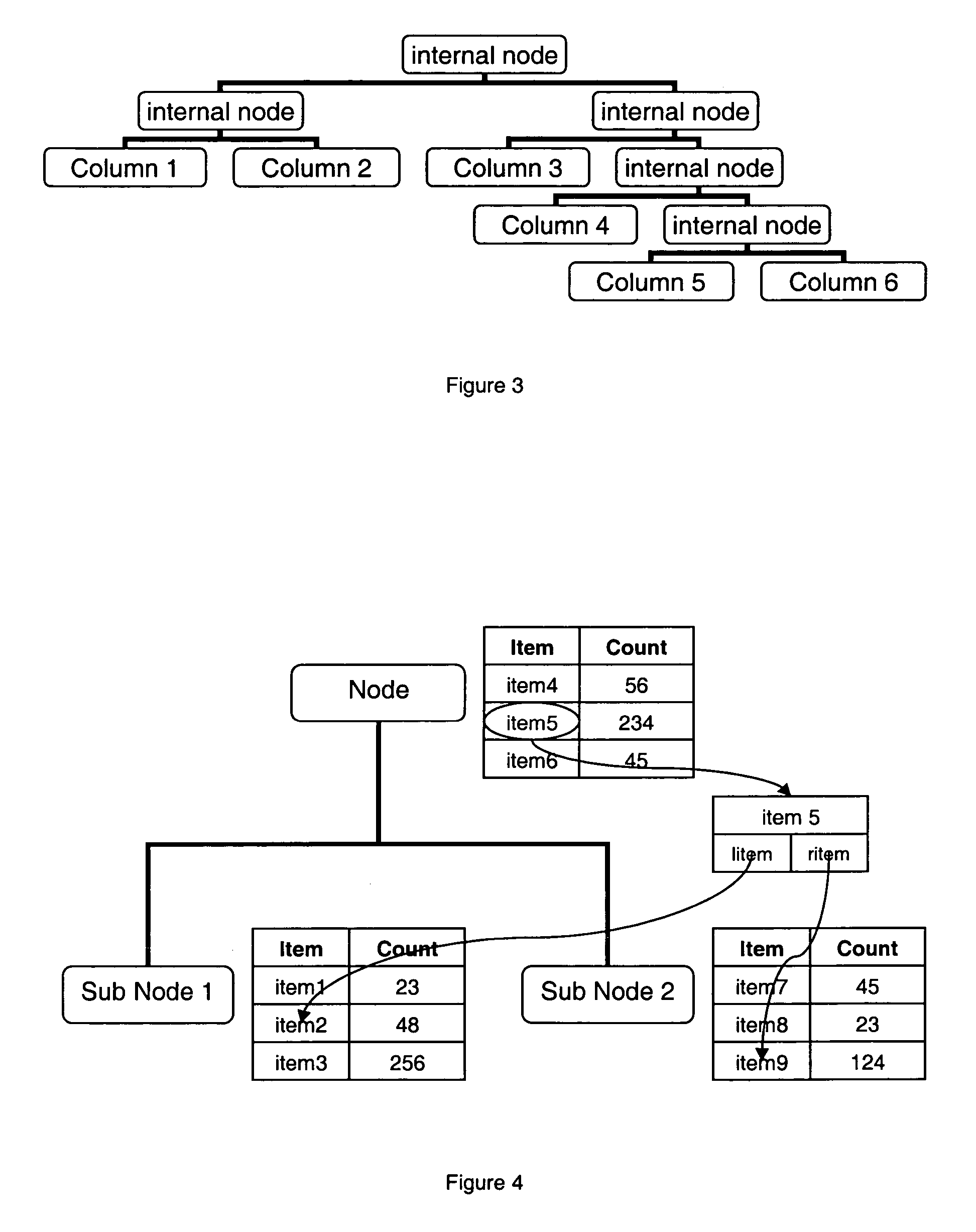Analytical system for discovery and generation of rules to predict and detect anomalies in data and financial fraud
a technology of financial fraud and analytical system, applied in the field of analytical system for discovery and generation of rules to predict and detect anomalies in data and financial fraud, can solve the problems of reducing accuracy, requiring constant maintenance, and less able to capture new trends. , to achieve the effect of reducing accuracy, reducing complexity, and reducing the number of errors
- Summary
- Abstract
- Description
- Claims
- Application Information
AI Technical Summary
Benefits of technology
Problems solved by technology
Method used
Image
Examples
Embodiment Construction
[0065]The preferred embodiments of the present invention process heterogeneous data sets comprising historical examples and background data to derive predictive rules, which, in one particular application, are subsequently applied to financial transactions in order to identify those that are likely to be fraudulent; and in another application, are applied to data in order to identify data quality anomalies therein. The preferred embodiments of a system according to the present invention comprise a number of distinct components described in detail in the following sections.
[0066]FIG. 1 provides an overview of how the components of the preferred embodiment fit together.[0067]1. The system's data import features allow the system to connect to any JDBC driver data source. The system is able to handle relational data found in multiple related database tables, rather than having to rely on propositional data found in single flat tables as in standard rule generation algorithms.[0068]2. Th...
PUM
 Login to View More
Login to View More Abstract
Description
Claims
Application Information
 Login to View More
Login to View More - R&D
- Intellectual Property
- Life Sciences
- Materials
- Tech Scout
- Unparalleled Data Quality
- Higher Quality Content
- 60% Fewer Hallucinations
Browse by: Latest US Patents, China's latest patents, Technical Efficacy Thesaurus, Application Domain, Technology Topic, Popular Technical Reports.
© 2025 PatSnap. All rights reserved.Legal|Privacy policy|Modern Slavery Act Transparency Statement|Sitemap|About US| Contact US: help@patsnap.com



